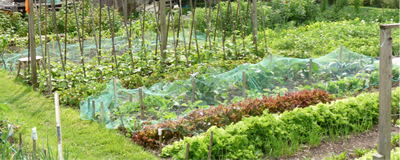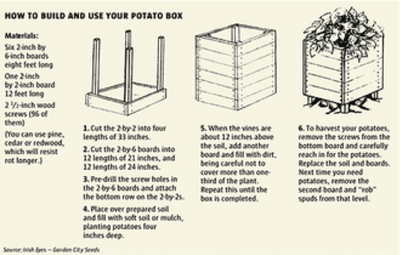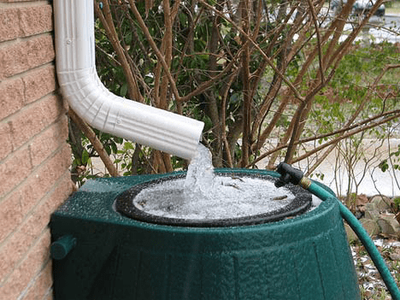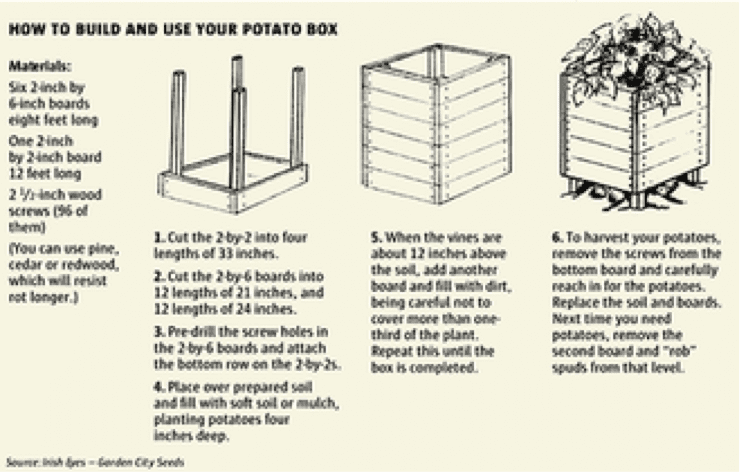|
Why bother?
In tough economic times growing a selection of fruit and vegetables can be cost effective. It can also be easy and fun. You will need
It's easy when you know how Growing your own vegetables has become more popular again, lately. With most people feeling the economic pinch many are looking at ways to save some money. Growing your own potatoes will give you a tastier potato than the shop bought variety, save you some money and is suitable for the smallest of gardens or yards. Like so many things though preparation is the key to yielding a good crop. A little time and effort spent initially will go a long way. Once your potatoes are established they will need the minimum effort on your part. Fresh new potatoes straight from the earth can be easily achieved and are well worth the effort. Where to plant Deciding on the best place to plant your potatoes will depend upon various considerations such as:
Potatoes need to have some shoots showing before they are planted. The practice of encouraging shoots to sprout is called chitting.
Planting in the garden Plant the potatoes in dug trenches that are up to 13 centimetres deep. The exact depth will depend upon the variety of potato. Check the packaging of the potatoes for any specific advice. The space needed between each potato will again depend upon the variety. Once the trenches are dug and prepared with some fertiliser:
Your crop should take about 3 or 4 months to grow and become ready for lifting. A lot will depend on the time of year. For early crop potatoes lifting can take place early in the season. In fact as soon as the shoots showing above the ground are green and in flower. For later crops you can leave the potatoes in the ground, even if the top growth looks well past its best. A couple of weeks before you are going to lift the crop, cut the top growth off at the ground. Doing so helps the potato skin to toughen up. This should make the potatoes less prone to damage as you lift them and extend their shelf life. Tips and advice
0 Comments
Leave a Reply. |
Archives
March 2017
Categories
All
|








 RSS Feed
RSS Feed




